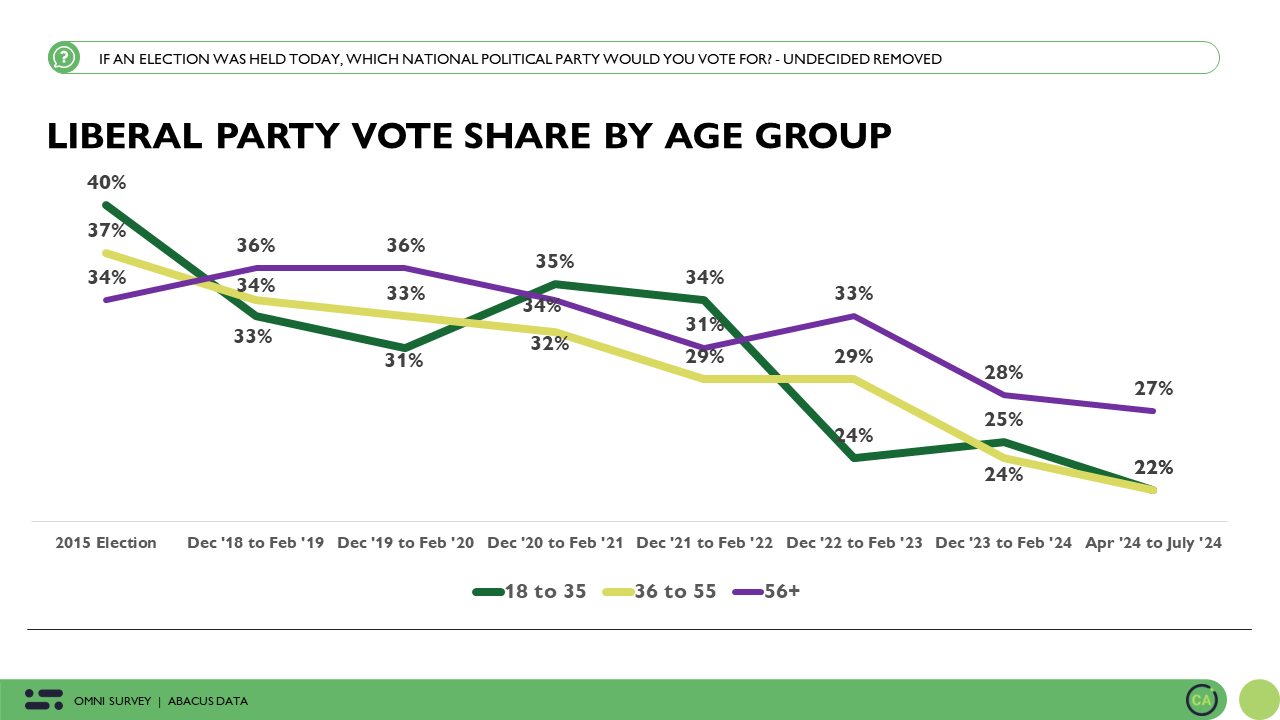NDP facing headwinds as support drops in Quebec.
September 28, 2015

In our latest nationwide poll, only 5 points separates the Conservatives (32%) Liberals (29%) and NDP (27%). However, underneath the national figures, important trends have been developing in Quebec and Ontario, where 199 of the country’s 338 seats are at stake. The number of undecided voters in our sample this week is 21%.
The NDP started the campaign with a slight lead in Ontario and has fallen behind the other parties and is now running third. This week the NDP suffered a large drop in support in Quebec.

Quebec
Since our last survey, the NDP shed 17 points in Quebec. When the election began, 37 points separated the NDP from the three other main parties. Today that gap has narrowed to 6 points, with the NDP at 30%, LPC 24%, CPC 21% and BQ 20%.

Ontario
In Ontario the NDP was roughly even with or slightly ahead of the other parties when the election began: currently (at 26%) they trail the Conservatives (36%) and Liberals (33%) by 10 and 7 points.
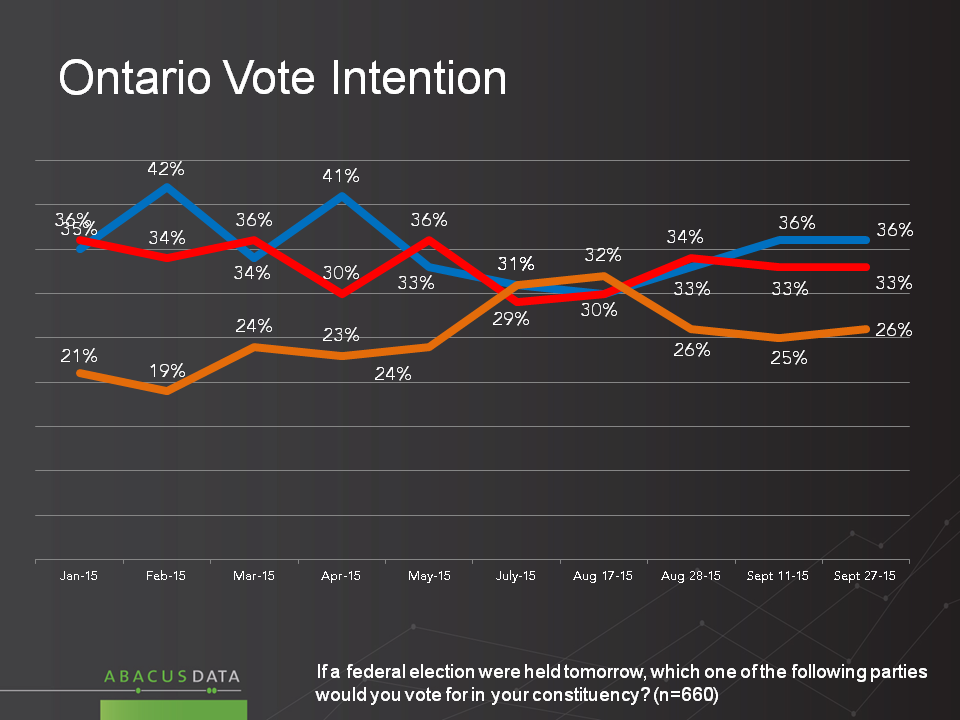
British Columbia
We see a tight three-way race with a gap of 3 points separating the three main parties, as the Liberals picked up support since the campaign began. The Green Party is at 8%.

Other Indicators
VOTER POOLS: the NDP voter pool has slid 7 points from its peak of 62%. The Liberal accessible voter pool (56%) is once again as big as that of the NDP (55%) while the Conservatives’ pool has increased to 45%, 4-points since last wave. In Quebec, the Conservative voter pool has increased 12 points from 19% to 31% in just two weeks.
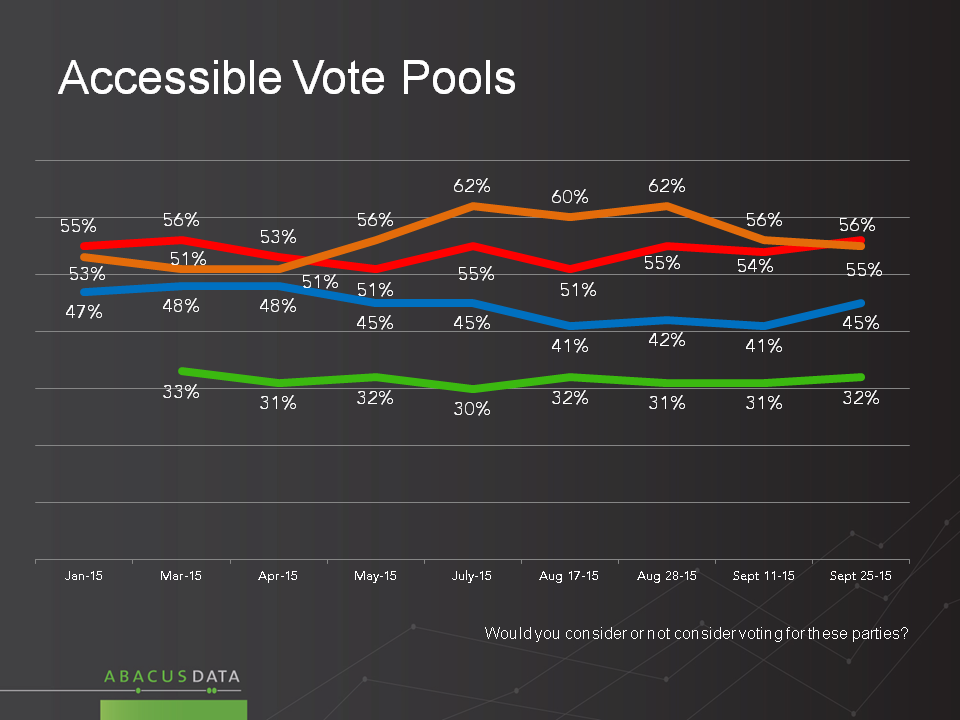
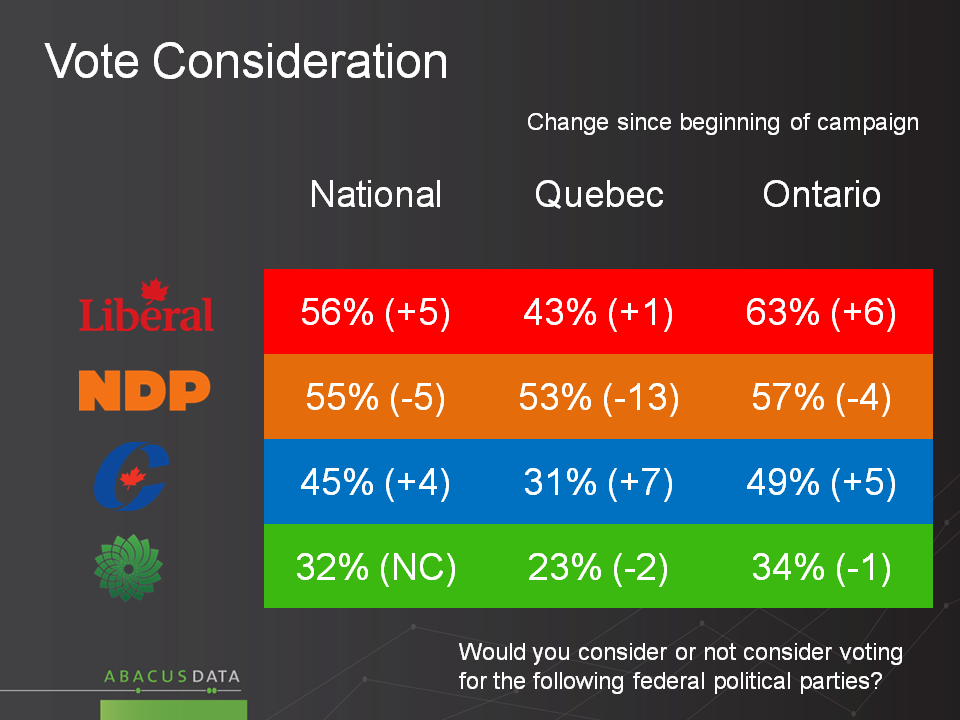
PREDICTED WINNER: 19% predict the NDP will win this election, down 7 points from our last wave. Confidence in an NDP win is down 17 points in Quebec and 7 points in Ontario since our last wave
27% predict the Conservatives will end up ahead, up 6 points. 22% predict a Liberal win.
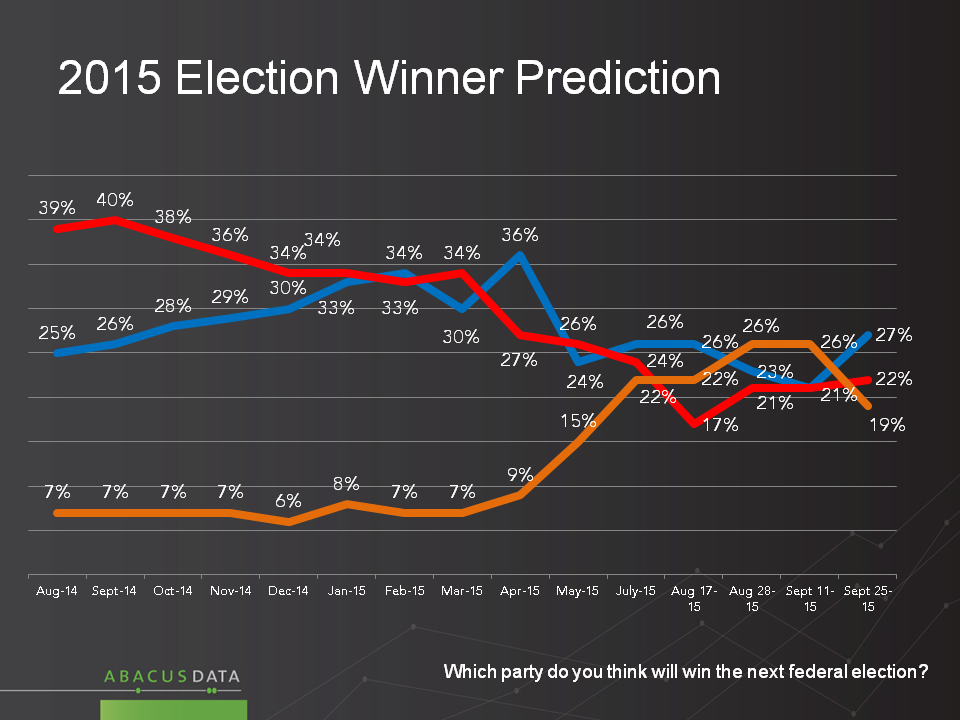
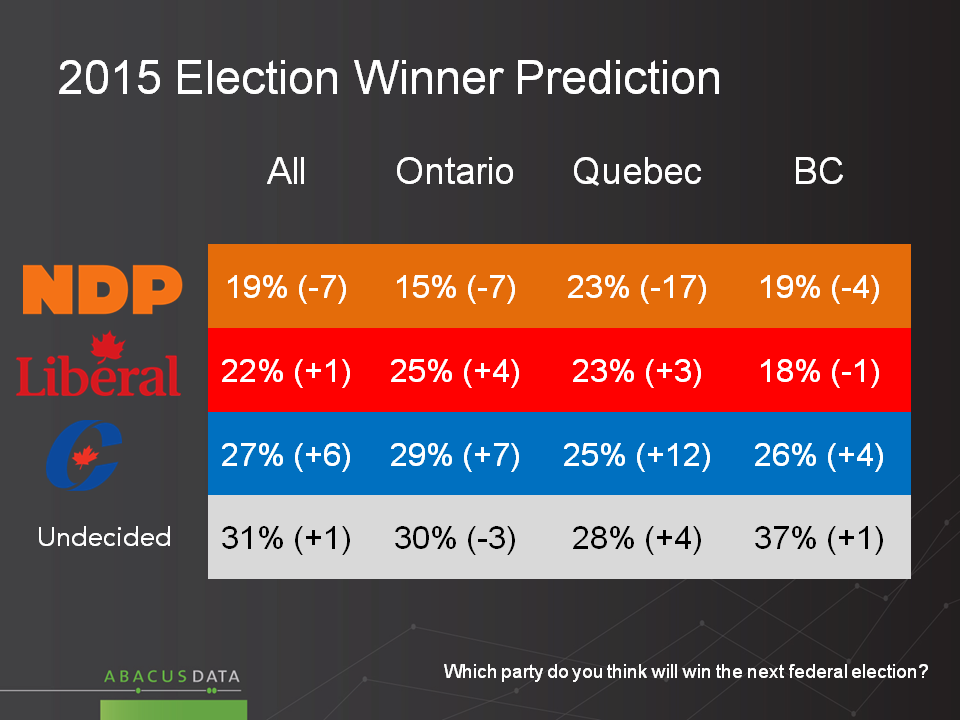
DESIRE FOR CHANGE: the desire for change remains broad (74%), but the intensity of that desire has softened a bit. Today, 56% say they definitely want change (down 5 points) and 18% say they it would be good to have a change but it’s “not all that important to me” (up 3 points).
Among those who most want change, the Liberals and the NDP are tied at 41%. At the beginning of this campaign, the NDP had a 16-point lead within this group. Among those who are only somewhat inclined to want change, we’ve seen a drop in NDP support to 21%, well behind the Liberals 33% and the Conservatives at 31%, and the party’s lowest score since May.
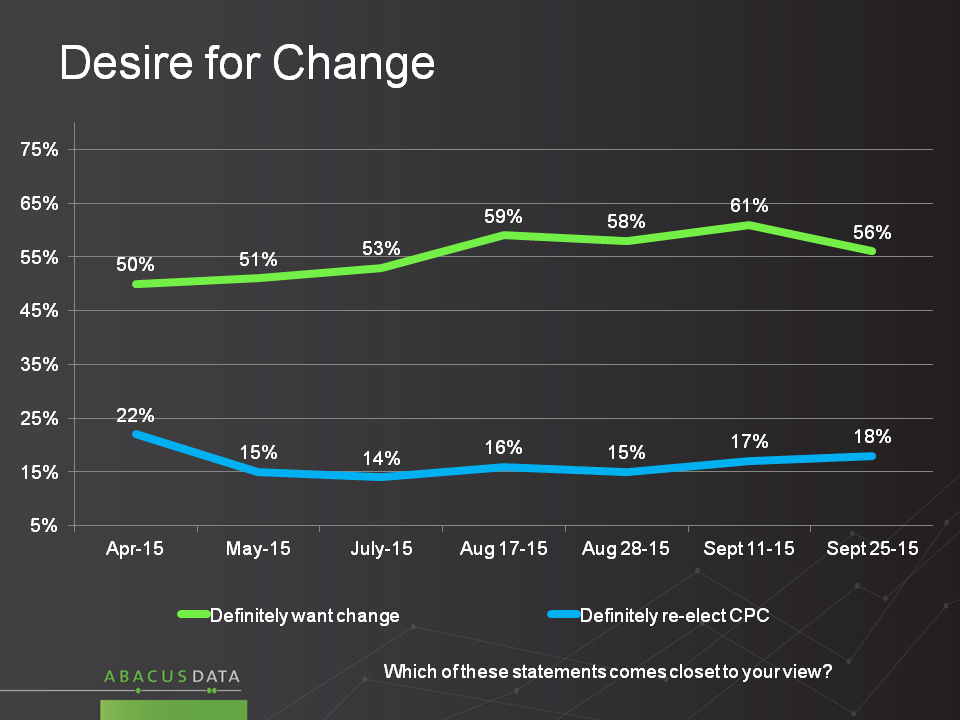

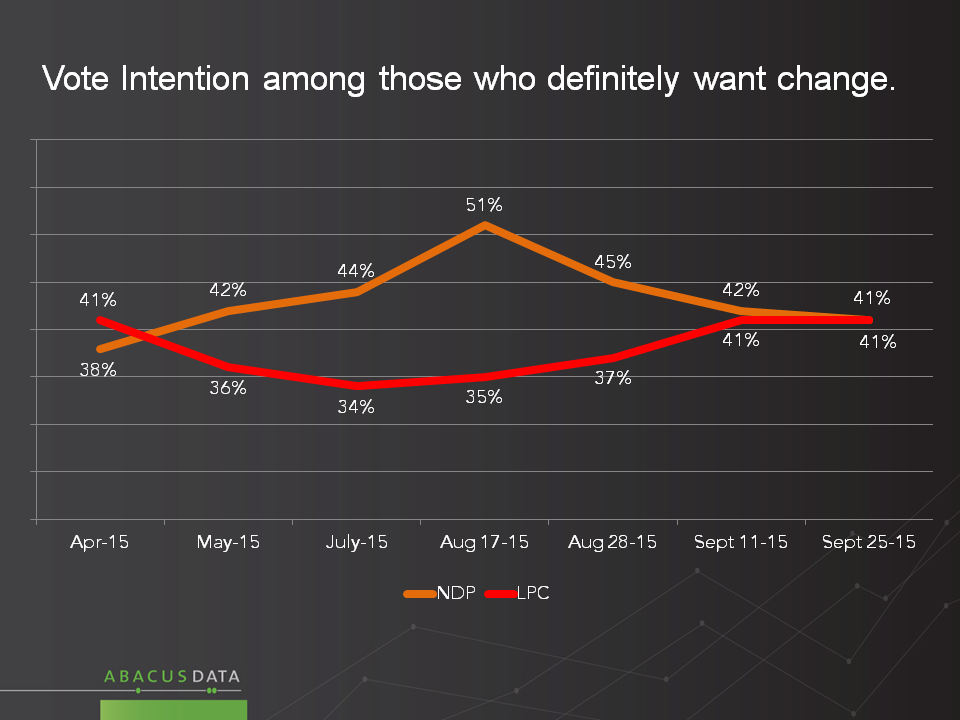

Views of Leaders
Just after the Alberta NDP victory, Thomas Mulcair’s popularity jumped from 27% (3rd place) to 41% (1st place). Recently his positives have sagged (to 36%) and his negatives have jumped (15% in July, 23% today). His net rating (positive minus negative) is down 18-points in Quebec.
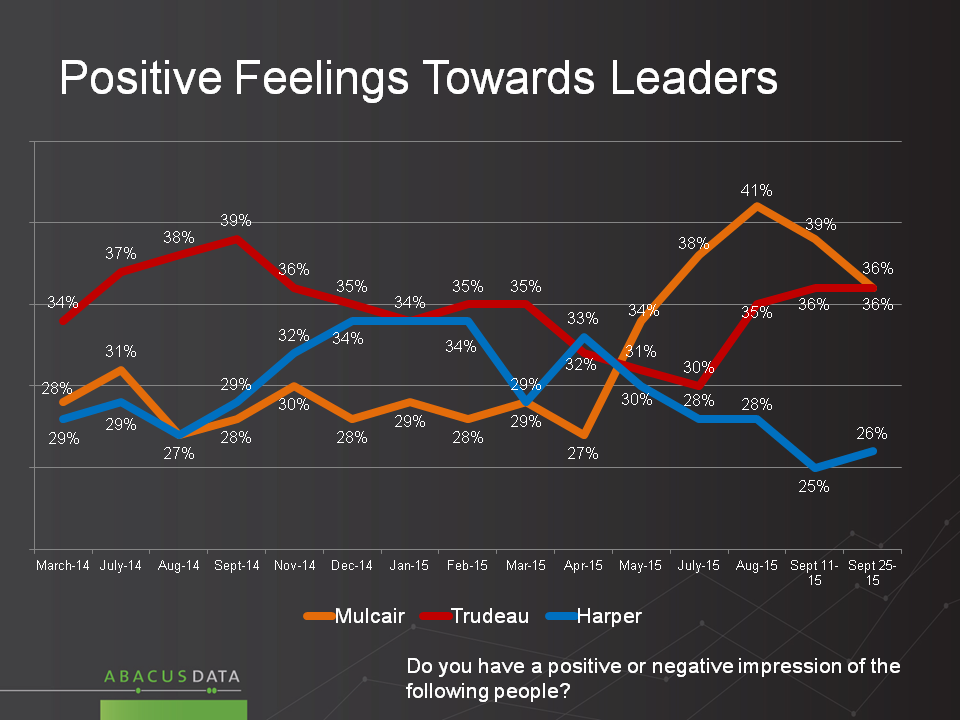
The summertime advantage that Mr. Mulcair had over Mr. Trudeau has mostly disappeared.
Justin Trudeau’s reputation (36% positive, 28% negative) has been steady in Quebec and improving in other parts of the country. A 40-point differential in Quebec between Mr. Mulcair and Mr. Trudeau has narrowed to 20 points.
Stephen Harper’s (26% positive, 50% negative) net rating improved 16 points in Quebec and dropped 4 points elsewhere.

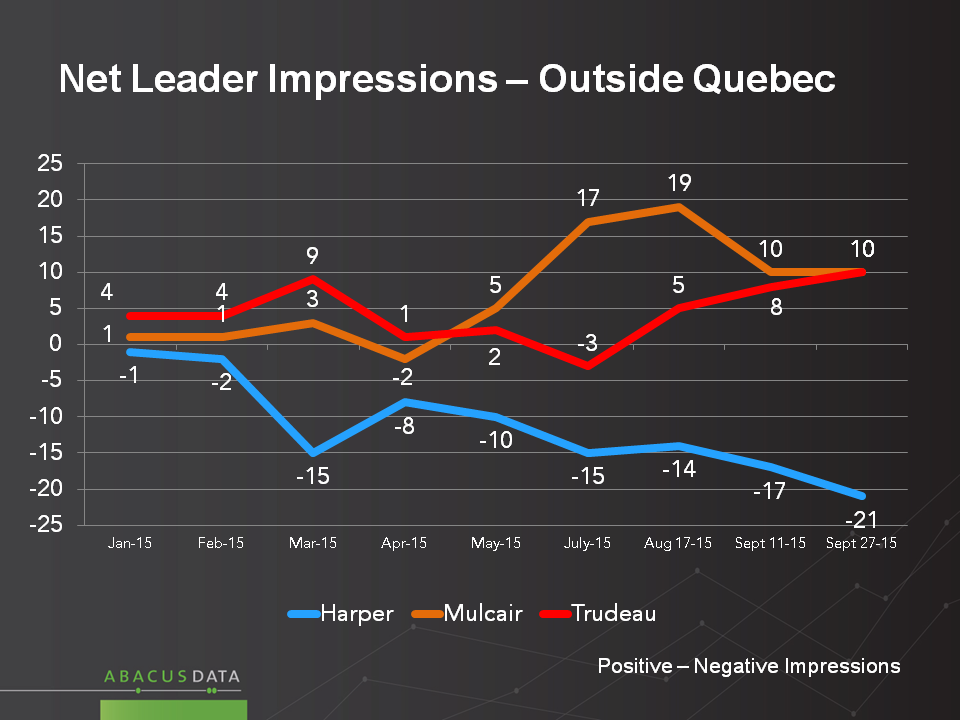
Reaction to Election Outcomes
A majority of Canadians would be ok with or happy with either a Liberal or an NDP victory. Majorities would be unhappy with a Conservative win. Since the last time we asked this question, there has been slight growth in resistance to Conservative wins (majority down 4, minority down 8) or an NDP majority (down 4).
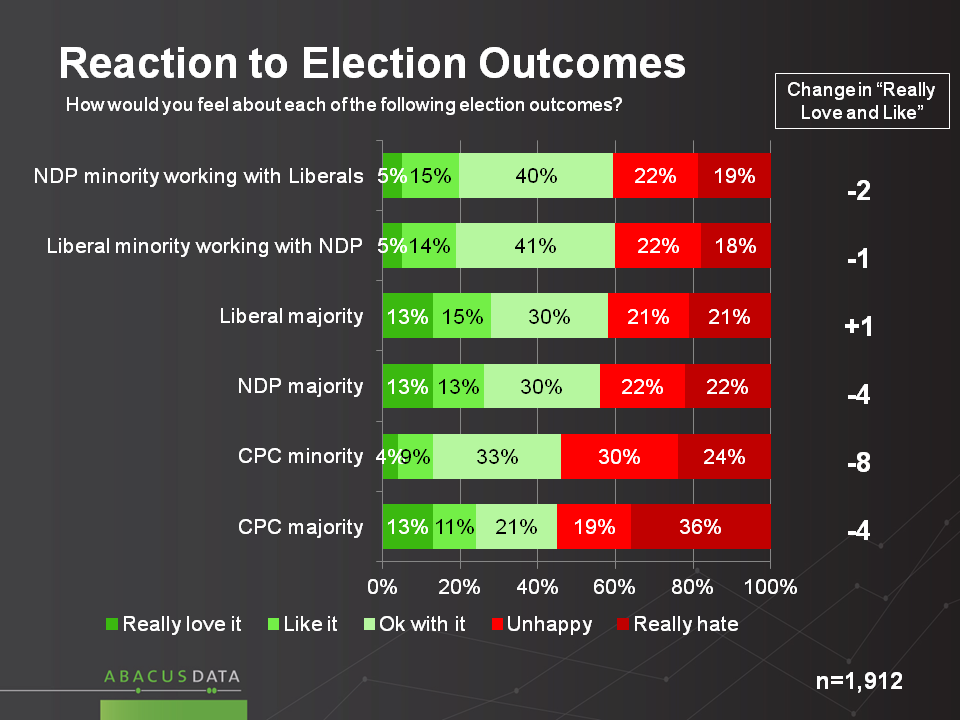
The Upshot
Having lost ground in Ontario since the election began, the NDP is now facing a loss of support in the province of Quebec, where they hold the majority of seats and where the bulk of their caucus is from.
The election remains very close, and the outcome impossible to predict. One of the variables to watch is whether change voters will consider strategic voting if they feel the choice of which party can best stop a fourth Conservative victory is becoming more clear. Most NDP voters would prefer a Liberal rather than a Conservative victory.
But while many prefer a change, change is not a foregone conclusion: the Conservatives are competitive in Ontario, and have experienced a lift in the province of Quebec as well.
Tomorrow, we’ll share more data about how perceptions of the different parties are changing and what may account for the shifting.
Methodology
Our survey was conducted online with 3,814 Canadians aged 18 and over from 9:30 pm ET on September 24 to 3:00pm ET on September 27, 2015. A random sample of panelists was invited to complete the survey from a large representative panel of over 500,000 Canadians, recruited and managed by Research Now, one of the world’s leading provider of online research samples.
The Marketing Research and Intelligence Association policy limits statements about margins of sampling error for most online surveys. The margin of error for a comparable probability-based random sample of the same size is +/- 1.6%, 19 times out of 20. The data were weighted according to census data to ensure that the sample matched Canada’s population according to age, gender, educational attainment, and region. Totals may not add up to 100 due to rounding.
Abacus Data Inc.
We offer global research capacity with a strong focus on customer service, attention to detail and value added insight. Our team combines the experience of our Chairman Bruce Anderson, one of Canada’s leading research executives for two decades, with the energy, creativity and research expertise of CEO David Coletto, PhD. For more information, visit our website at http://www.abacusdata.ca/




